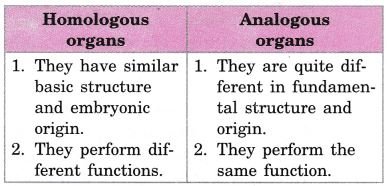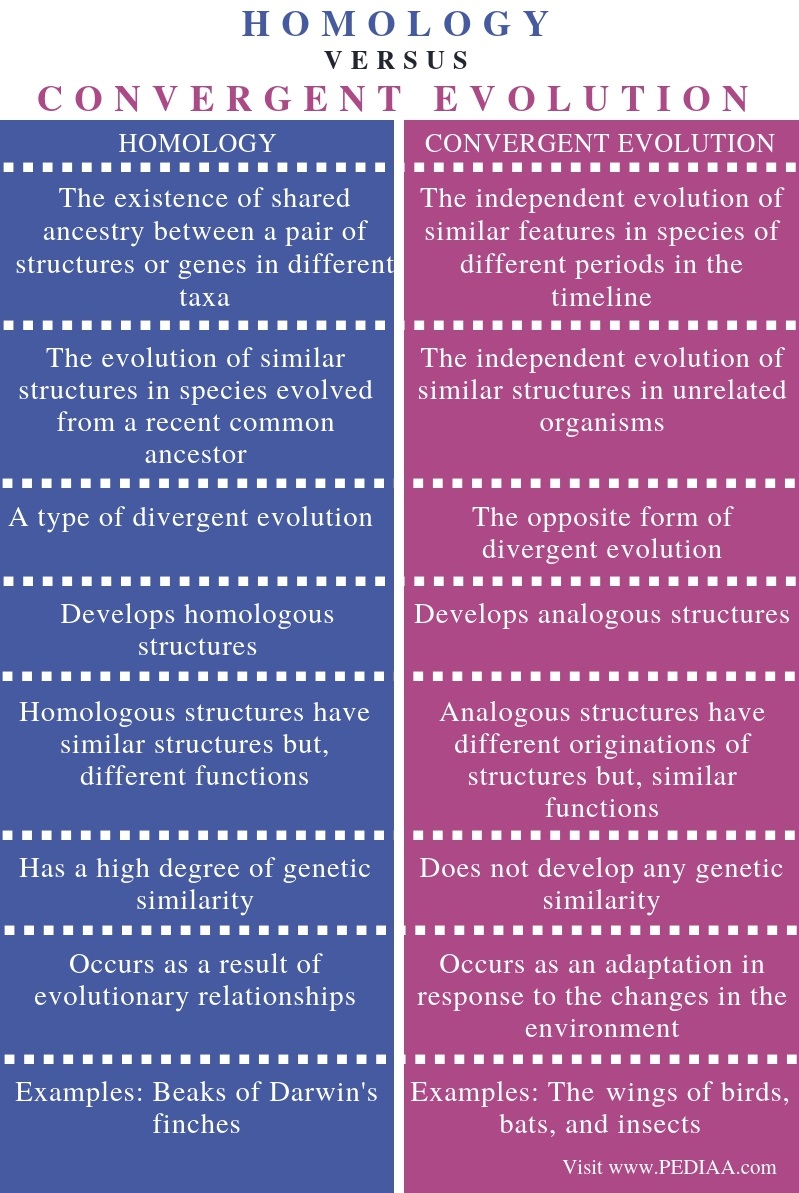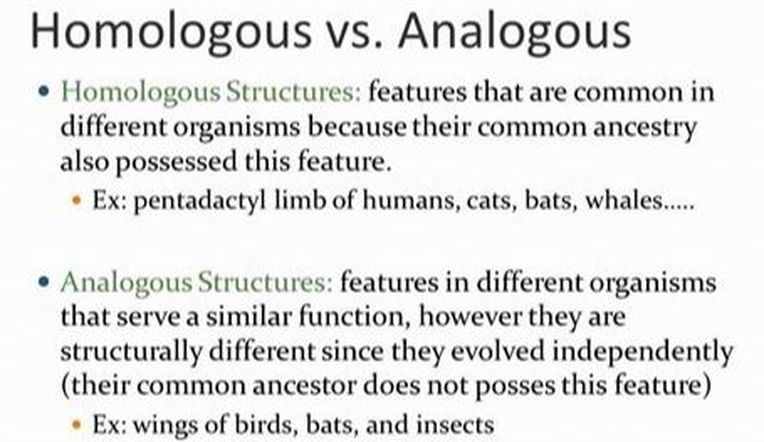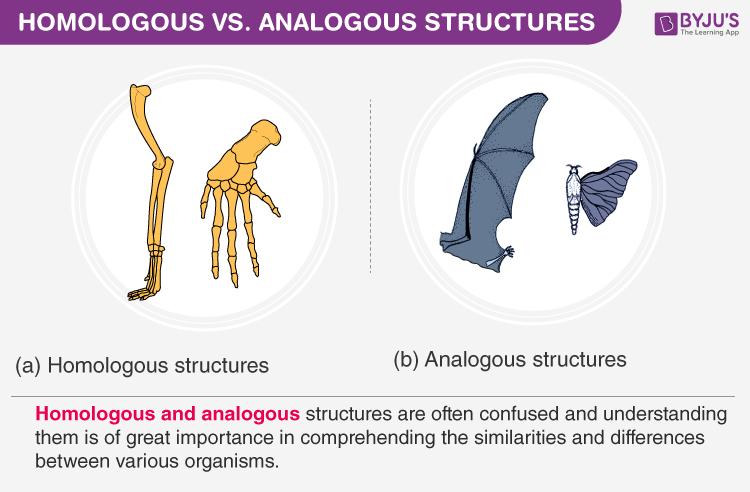An example of analogous features are the wings of birds and wings of insects. For example the wings of a fly a moth and a bird are analogous because they developed independently as adaptations to a common functionflying.
What Is The Difference Between Homologous Structures And Vestigial Structures Pediaa Com
Tail of a lizard and stinger of a wasp e.
. Homologous structures are structures that may look or function differently from related organisms. What are analogous organs with example. Analogous organs have a similar.
In homologous structures origin and development of structures are quite similar whereas in. Analogous structures share a similar function but not an evolutionary origin. Homologous organs are those.
The similarity of the body structure of different organisms on the basis of their common ancestry is called homologous structures whereas the similarity of the body structure of different organisms belonging from different groups is called analogous structure. The key difference between homologous and analogous structures is that homologous structures are derived from a common ancestral structure while analogous structures are derived from different evolutionary ancestries. The following are the differences between analogous and homologous structures.
On the other hand analogous structures are such structures that are similar in their function and appearance but do not have any links between their ancestors. Similar characteristics from common ancestry Analogous structures. Front leg of an insect and bones in the leg of a human d.
These structures are not analogous. Homologous structures Analogous Structure Share common ancestry but not comm View the full answer Transcribed image text. Homologous structures share a similar embryonic origin.
Darwin called these structures analogous features. It can be challenging to tell when two organisms share an analogous trait or a homologous trait. Analogous structureAnalogy in biology similarity of function and superficial resemblance of structures that have different origins.
Wing of an insect and wing of a bird b. Differentiating Homologous and Analogous Structures. For instance analogous structures are the opposite type of structures to homologous structures based on their origin.
Convergent evolution is the opposite of divergent evolution in which related species evolve different traits. Study of prehistoric life. It means that though analogous structures have similar structure and function they have a different origin.
Analogous characters cannot be used to infer evolutionary relationships between taxa whereas homologous characters are used to construct evolutionary relationships and phylogeny of taxa. Analogous organs have a similar function. Homologous structures are in the physical realm while analogous structures are a shared functionThe former is more important because it can be traced by similarity between living animals and fossils.
Science Biology QA Library Use examples to explain the difference between analogousstructures and homologous structures. Homologous structures share a similar embryonic origin. Similar function Different structure.
The structures of both these types of wings is very different but yet the wings both give the bird and insect the ability to fly. Tentacle of an octopus and flipper of a whale c. For example the bones in a whales front flipper are homologous to the bones in the human arm.
The study of organisms before theyre fully developed. That involved similar functions but had a difference in structure. Heres the difference between homologous and analogous structures.
A human hand and a whale flipper do very different things but have the same number and basic arrangement of bones prove that since the structures are slightly similar in appearance any two species sharing homologous structures. These are analogous structures Figure 2. Use examples to explain the difference between analogousstructures and homologous structures.
Only one shows homologous structures - which one and why. Study of the structure of organisms. Homologous structures are such structures that do not show exact similarity in their appearance and function but are linked with their common ancestor.
The study of the chemical processes of organisms. Explain the difference between a homologous structure and an analogous structure. Explain the difference between Homologous and Analogous structures and give an example of each.
Hence they occur in evolutionary-unrelated animals. Analogous structures arise from convergent evolution but homologous structures do not. What is the difference between analogous and homologous.
Homologous structures or structures that are made of similar things but have very different functions Example. Similar traits can be either homologous or analogous. Analogous structures are structures that look and.
Difference Between Homologous And Analogous Structures Difference Between
Difference Between Homologous And Analogous Structures Difference Between
Difference Between Homologous And Analogous Structures Definition Features Examples

Difference Between Homologous And Analogous Structures

What Are The Difference Between Homologous And Analogous Organ Biologysir

What Is The Difference Between Homology And Convergent Evolution Pediaa Com
Difference Between Homologous And Analogous Structures Difference Between


0 Comments